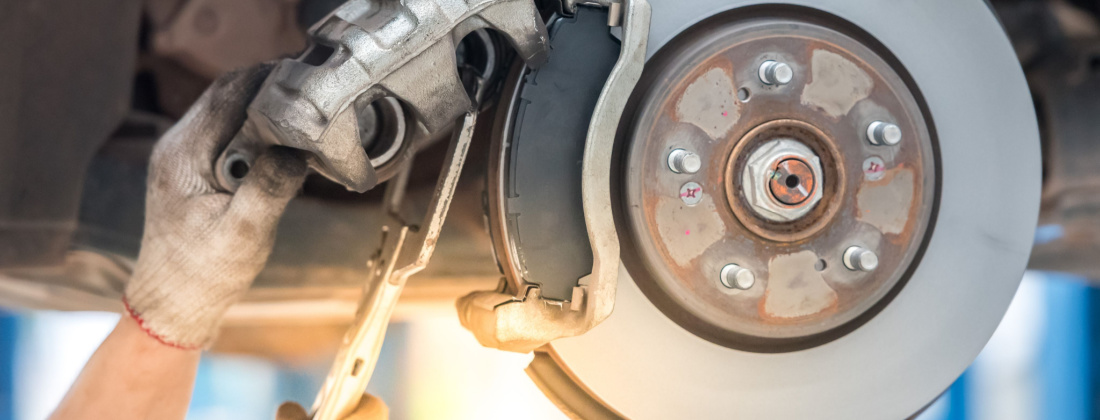Brake Repair Service: How Do Brakes Work?
November 3, 2022
Maintenance

Cars are incredible machines. They can go from 0 to 60 in a matter of seconds and can brake just as quickly. But have you ever wondered how car brakes work?
A car’s braking system is quite simple. When you press the brake pedal, it activates a hydraulic system that applies pressure to the brakes. This pressure makes the brakes grip the rotating wheels and slow them down. The more pressure you apply, the faster the wheels will stop.
The brakes on a car are designed to work even if one of the wheels is not working properly. That’s because each wheel has its own brakes. The front wheels usually have disc brakes, while the rear wheels have drum brakes. Let’s take a look at how these two types of brake systems work to keep you safe on the road.
Disc Brakes
Disc brakes are the more modern of the two types, and they are used on both cars and trucks. They have single-piston sliding callipers that attach to the discs. The discs are made from metal, typically steel, although aluminum is sometimes used.
Disc brakes have several advantages over drum brakes. When applying the brakes, the disc brakes will dissipate heat more effectively, which prevents the brakes from overheating and failing.
They’re also less likely to fade under heavy use, making them ideal for high-performance driving. Disc brakes also have a quicker response time than drum brakes and don’t require as much pedal pressure to engage.
Despite their advantages, disc brakes have a few drawbacks. They’re more expensive to repair and replace than drum brakes, and they require more frequent maintenance.
In addition, disc brakes can become damaged if exposed to road debris or saltwater. Overall, though, disc brakes are the superior choice for modern cars.
How Disc Brakes Work
Disc brakes work by using pressure to squeeze a pair of pads against a spinning disc (rotors). The rotor spins as the wheel turns, and the pads are pushed against it.
The brake pad transfers the pressure from the piston to the rotor and then finally to the wheel, making the car slow down or stop.
Disc brake performance is determined by various factors. The first is the amount of friction created between the brake pads and brake rotors.
The harder you press the brake pedal, the more pressure is applied to the rotor and the more friction is created.
The size of the disc also affects its efficiency. Smaller discs can generate more friction, but they don’t have as much surface area to do so.
Larger discs have more surface area to create friction, but they don’t create as much pressure.
Drum Brakes
Drum brakes are generally older designs than disc brakes and are not as common in new vehicles. Drum brakes have a spinning cylinder (the drum) that has shoes attached to the inside. These two work in tandem to slow or stop the vehicle.
Drum brakes are not as good at dissipating heat, but they are cheaper to manufacture, so they are still used on many newer cars in the rear position.
How Drum Brakes Work
Drum brakes work by hydraulic fluid pressuring the shoes outward against the rotating drums. The shoes have a friction material (often made of asbestos) that creates the necessary friction to slow or stop the car.
When the car’s driver presses the brake pedal, hydraulic fluid is sent to the cylinders in the drums. This pressurized fluid then forces the shoes outward, into contact with the drums. The friction between the shoes and drums slows down or stops the car.
The amount of pressure applied to the drum will depend on the position of the brake pedal. The longer you press the pedal, the more the pressure will increase and the more friction will be applied to the drum and the wheel.
To sum it up
So, that’s a quick rundown of how drum and disc brakes work. You should now have a better understanding of both systems and what they have to offer.
Back


